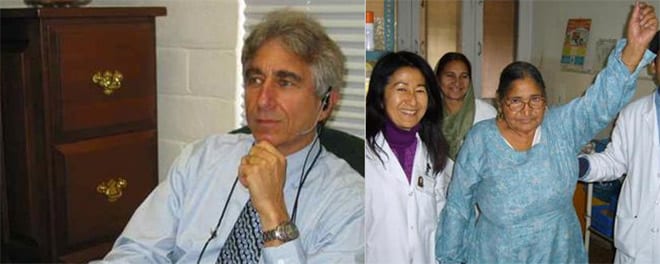
The news from Africa about Ebola is frightening. In the worst affected countries of Liberia, Sierra Leone and Guinea, at least 6,388 deaths and 17,942 cases have been reported.
In our country, On 2 December, the World Health Organisation declared Spain an Ebola-free country.The last patient, Teresa Romero, had been cured 42 days earlier.
There is no treatment or vaccine for the Ebola virus.
Ebola patients with haemorrhagic fever are treated by intravenous or oral rehydration.
Many viruses have no vaccine. Moreover, due to their lethality and the socio-economic circumstances of the countries in which they develop, there is no adequate research.
In the United States, where there have so far been four cases and one death, investigations of all kinds are underway to try to stop Ebola.
One of them relates to the use of the ozone therapy for the treatment of Ebola disease.
Treatment of Ebola with ozone therapy
With a treatment costing less than 40 euros, Dr Robins of New York and Dr Rowen of Santa Rosa, California, announced in November that they had successfully cured Ebola in a doctor who was infected by a needle stick in Sierra Leone using ozone.

The doctor, who had been trained in the Rowen-Robins Ebola treatment protocol, which uses the Robins-specific method of direct intravenous infusion of ozone gas (DIV) was pricked on 14 November, on 16 November he developed the first symptoms and after the application of the Robins and Rowen therapy on 18 November he was cured and had no symptoms at all.
The doctor who reported high fever, loss of appetite, abdominal discomfort and significant fatigue, symptoms that rapidly progressed to classic signs of Ebola on day 16, was symptom-free by day 18.
The treatment was coordinated by Kojo Carew, MD from Freetown, Sierra Leone. Dr Carew is the physician in charge of maintaining the programme and equipment/supplies brought and delivered by Rowen/Robins, who came to Sierra Leone to teach the protocol at the invitation of President Ernest Bai koroma in October 2014.
The cured doctor decided not to take an Ebola blood test at that time. A positive test would have forced him into forced confinement in an Ebola treatment centre where he would have been denied the ozone therapy. He believed that this would probably have cost him his life, as the best clinics in Sierra Leone have a mortality rate of 60%.
Rowen and Robins, who monitored the treatment applied, did not want to wait for a positive test, which can take several days, believing that the more aggressively and early this viral infection is treated, the greater the recovery capacity.. Active treatment is maintained for at least 10 days with frequency reduction for 7 days thereafter.
Confinement in a conventional Ebola treatment facility would have denied him ozone therapy. continued that for the first time in the world, rapidly reversed the manifestation of the lethal Ebola disease. IVD ozone therapy is considered experimental for Ebola at this time and is not currently allowed in treatment centres. However, other experimental treatments are allowed.
On 22 November 2014, Dr. X is in apparent good health and completely symptom-free.
Drs Rowen and Robins are very pleased that the cheap DIV ozone, along with other aspects of the treatment protocol (oral vitamin C, nutritional support) have resulted in the first, rapid and complete recovery from Ebola symptoms.
This statement was published on Dr Rowen's website, rather than in a medical journal, because Dr Rowen and Dr Robins believe that this news can and should lead to saving many lives, which to them are more important than the routine medical reporting protocol.; and health authorities around the world need to be vigilant in tackling this deadly disease.
Rowen and Robins remain continuously available to assist in Ebola healing efforts around the world.
It must also be recognised that The International Medical Ozone Federation (IMEOF) has long claimed that ozone therapy was a feasible solution to tackle the Ebola virus.It called on the World Health Organisation (WHO), as well as other health authorities and NGOs, to authorise its use within medical protocols.

